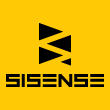DynamoDB, Amazon's NoSQL solution released during Database Month
Amazon DynamoDB is a fully managed NoSQL database cloud service providing quick performance with seamless scalability.
At the very start of Database Month, the Amazon Web Services Team added DynamoDB to the AWS database offerings. DynamoDB complements ElastiCache and their Amazon RDS service which is essentially MySQL in the cloud, but also seems to compete head-on with their own SimpleDB, a flexible non-relational cloud-based data store.
Like all cloud-based database services, DynamoDB removes the need for building replication or clustering architecture, hardware management and configuration as well as system administration and updating software.
With either Amazon RDS, DynamoDB or SimpleDB, users can query, retrieve and store any quantity of data and handle any amount of traffic without concern for scalability.
For performance-driven applications there is one clear advantage that DynamoDB has over other cloud databases including SimpleDB; DynamoDB stores data items on solid state drives that are automatically replicated across multiple zones for redundancy-based high availability and system durability.
The day after DynamoDB was released, Eliot Horowitz, CTO and Co-Founder of 10gen, mentioned it during his Database Month presentation about MongoDB, an open-source NoSQL database, and the audience seemed quite enthusiastic about what DynamoDB promises and was particularly focused on its data being served from SSD.
DynamoDB falls under the key-value-store segment of the NoSQL non-relational database sector which has a significantly different use-case than MongoDB but is a direct-alternative to Couchbase Server (formerly Membase) and CouchDB. The VP of Engineering from Couchbase, Sharon Barr, will be presenting the finale event of Database Month about Couchbase and CouchDB on Jan. 31, 2012 and will no-doubt address how Couchbase differentiates from DynamoDB.
For Amazon's newest NoSQL technology, there is a clever automatic scaling of DynamoDB database tables via re-partitioning data on the fly to meet the current usage requirements and to minimize latency.
Werner Vogels, CTO of Amazon.com, has explained the DynamoDB project at length on his All Things Distributed blog and covers the differentiators between SimpleDB and DynamoDB, most notable for big-data users is the lack of 10gb per-domain storage limit of SimpleDB and for those needing ACID-compliance, the "eventually consistent" approach is history with DynamoDB too.















































